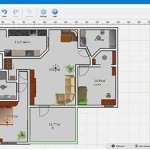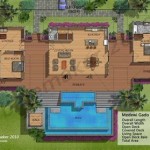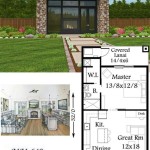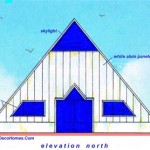Mountain Ranch House Plans are blueprints specifically designed to create custom homes tailored to the rugged beauty of mountain environments. These plans incorporate unique architectural elements that embrace the surrounding landscape, capturing the essence of mountain living.
From sprawling cabins with inviting stone fireplaces to cozy lodges nestled amidst towering trees, Mountain Ranch House Plans offer a wide range of options to meet the diverse needs and preferences of mountain dwellers. Whether it’s a secluded retreat or a family-oriented gathering space, these plans provide a foundation for creating a home that seamlessly blends with its surroundings.
As we delve into the intricacies of Mountain Ranch House Plans, we will explore the key design principles, architectural features, and practical considerations that go into crafting a truly stunning and functional mountain home.
When planning a mountain ranch house, there are several key considerations to keep in mind:
- Embrace the landscape
- Maximize natural light
- Incorporate local materials
- Design for energy efficiency
- Create indoor-outdoor flow
- Prioritize durability
- Consider accessibility
- Plan for storage
- Accommodate multiple uses
- Seek professional guidance
By addressing these points, you can create a mountain ranch house that is both beautiful and functional, a true reflection of its stunning surroundings.
Embrace the landscape
One of the key principles of Mountain Ranch House Plans is to embrace the surrounding landscape and create a seamless connection between the home and its natural environment. This can be achieved through various architectural elements and design strategies:
1. Large windows and expansive views: Floor-to-ceiling windows and sliding glass doors flood the home with natural light and offer breathtaking views of the surrounding mountains, forests, and valleys. These large openings blur the boundaries between indoors and outdoors, allowing occupants to feel immersed in the beauty of their surroundings.
2. Outdoor living spaces: Decks, patios, and screened-in porches extend the living space beyond the walls of the home, providing opportunities to enjoy the fresh mountain air, dine al fresco, and soak in the scenery. These outdoor areas can be designed with fireplaces, built-in seating, and outdoor kitchens, creating inviting spaces for relaxation and entertainment.
3. Natural materials and textures: Incorporating local materials such as wood, stone, and glass helps to blend the home into its surroundings. Natural wood beams, stone fireplaces, and slate floors bring the beauty of the outdoors into the home, creating a warm and inviting ambiance.
4. Sloped roofs and multi-level designs: Many Mountain Ranch House Plans feature sloped roofs and multi-level designs that mimic the contours of the landscape. This helps to minimize the visual impact of the home on the environment and create a more harmonious relationship between architecture and nature.
By embracing the landscape, Mountain Ranch House Plans create homes that are not just structures but integral parts of their surroundings. These homes offer a unique and immersive living experience, allowing occupants to fully appreciate the beauty and tranquility of the mountain environment.
Maximize natural light
In mountain environments, natural light can be a precious commodity, especially during the winter months. Mountain Ranch House Plans are designed to maximize natural light, creating bright and airy living spaces that take advantage of the stunning mountain views:
- Large windows and expansive views: Floor-to-ceiling windows and sliding glass doors are a common feature in Mountain Ranch House Plans. These large openings allow natural light to flood into the home, creating a sense of spaciousness and openness. Expansive views of the surrounding mountains, forests, and valleys connect the occupants with the beauty of their surroundings.
- Clerestory windows: Clerestory windows are placed high on the walls, often above cabinets or bookshelves. They allow natural light to enter the home even when the lower walls are covered by furniture or other objects. This is particularly useful in areas such as kitchens and bathrooms, where natural light is often limited.
- Skylights and sun tunnels: Skylights and sun tunnels are installed on the roof to bring natural light into the interior of the home. Skylights are larger openings that provide a direct view of the sky, while sun tunnels are smaller, tubular devices that reflect sunlight into the home. These features can be especially beneficial in areas with limited wall space for windows.
- Light-colored interiors and reflective surfaces: To maximize the impact of natural light, Mountain Ranch House Plans often incorporate light-colored interiors and reflective surfaces. White or light-colored walls, ceilings, and flooring reflect and distribute natural light throughout the home. Mirrors and shiny surfaces can also be used to bounce light around and create the illusion of a brighter space.
By maximizing natural light, Mountain Ranch House Plans create homes that are not only beautiful but also healthy and energy-efficient. Natural light has been shown to improve mood, boost productivity, and reduce stress levels. It can also help to reduce the need for artificial lighting, saving energy and reducing environmental impact.
Incorporate local materials
Incorporating local materials into Mountain Ranch House Plans offers several advantages, both aesthetic and practical:
- Blending with the surroundings: Using local materials helps to blend the home into its surroundings, creating a harmonious relationship between architecture and nature. Local materials, such as wood, stone, and slate, have a natural affinity with the mountain environment and can help to minimize the visual impact of the home.
- Durability and longevity: Local materials are often well-suited to the specific climate and environmental conditions of the mountain region. For example, using locally sourced wood species that are naturally resistant to rot and decay can ensure the longevity of the home’s exterior. Local stone can also provide excellent durability and weather resistance for exterior walls and patios.
- Sustainability and environmental friendliness: Using local materials reduces the need for transportation and minimizes the environmental impact of construction. Local materials also support the local economy and promote sustainable building practices.
- Unique character and charm: Local materials add a unique character and charm to Mountain Ranch House Plans. The use of natural wood, stone, and other local elements creates a sense of place and reflects the local building traditions and craftsmanship.
By incorporating local materials, Mountain Ranch House Plans create homes that are not only beautiful but also sustainable and respectful of the surrounding environment. These homes have a unique character and charm that reflects the local culture and traditions, while also providing durability and longevity in the face of challenging mountain conditions.
Design for energy efficiency
Mountain Ranch House Plans are designed to be energy-efficient, taking advantage of the unique climate and environmental conditions of mountain regions to minimize energy consumption and reduce environmental impact:
- Insulation and air sealing: Proper insulation and air sealing are crucial for energy efficiency in mountain homes. Insulation helps to trap heat inside the home during the winter and keep it out during the summer, reducing the need for heating and cooling. Air sealing prevents drafts and air leaks, which can account for significant heat loss.
- Energy-efficient windows and doors: Windows and doors are major sources of heat loss in homes. Mountain Ranch House Plans specify energy-efficient windows and doors that have low U-factors and high R-values. These windows and doors are designed to minimize heat transfer, reducing energy consumption and improving comfort.
- Passive solar design: Passive solar design takes advantage of the sun’s energy to heat the home naturally. Mountain Ranch House Plans often incorporate large south-facing windows to capture sunlight and distribute it throughout the home. Thermal mass, such as concrete or stone floors, can absorb and store heat from the sun during the day and release it at night, providing a natural form of heating.
- Energy-efficient appliances and lighting: Energy-efficient appliances and lighting can significantly reduce energy consumption in Mountain Ranch House Plans. Look for appliances with the ENERGY STAR label, which indicates that they meet strict energy-efficiency standards. LED lighting is also a highly energy-efficient option that can save energy and reduce lighting costs.
By incorporating these energy-efficient features, Mountain Ranch House Plans create homes that are not only comfortable and stylish but also environmentally friendly and cost-effective to operate. These homes can significantly reduce energy consumption, lower utility bills, and minimize their carbon footprint.
Create indoor-outdoor flow
Creating a seamless flow between indoor and outdoor spaces is a fundamental principle of Mountain Ranch House Plans. This connection to nature enhances the living experience and brings the beauty of the mountain environment into the home:
Expansive decks and patios: Decks and patios extend the living space beyond the walls of the home, providing ample opportunities to enjoy the fresh mountain air, dine al fresco, and soak in the scenery. These outdoor areas are often designed with built-in seating, fireplaces, and outdoor kitchens, creating inviting spaces for relaxation and entertainment.
Large windows and sliding glass doors: Floor-to-ceiling windows and sliding glass doors blur the boundaries between indoors and outdoors. These large openings offer expansive views of the surrounding mountains, forests, and valleys, creating a sense of spaciousness and immersion in nature. They also allow natural light to flood into the home, reducing the need for artificial lighting and creating a bright and airy ambiance.
Screened-in porches and sunrooms: Screened-in porches and sunrooms provide a comfortable and protected space to enjoy the outdoors without being exposed to insects or inclement weather. These areas can be furnished with cozy seating, dining tables, and even fireplaces, creating a versatile space for year-round use.
Walk-out basements and lower levels: Walk-out basements and lower levels offer direct access to the outdoors, creating additional living space and recreational areas. These spaces can be designed with sliding glass doors or French doors that lead to a patio or backyard, providing a seamless transition from indoor to outdoor activities.
By creating indoor-outdoor flow, Mountain Ranch House Plans connect occupants with the beauty of their surroundings and enhance their living experience. These homes offer ample opportunities to enjoy the fresh mountain air, entertain guests, and immerse themselves in the tranquility of nature.
Prioritize durability
Mountain Ranch House Plans must prioritize durability to withstand the unique challenges and environmental conditions of mountain regions. These homes are often exposed to extreme weather conditions, including heavy snow loads, strong winds, and fluctuating temperatures. To ensure longevity and resilience, Mountain Ranch House Plans incorporate the following durability features:
- Structural integrity: The structural design of Mountain Ranch House Plans emphasizes strength and stability. Strong foundations, reinforced framing, and durable roofing systems are essential to withstand heavy snow loads and high winds. Structural engineers carefully calculate the load-bearing capacity of each element to ensure the home can safely support the weight of snow and other environmental forces.
- Exterior materials: Mountain Ranch House Plans specify exterior materials that can withstand harsh weather conditions and resist damage from moisture, insects, and UV radiation. Durable materials such as fiber cement siding, metal roofing, and composite decking are commonly used. These materials are designed to withstand extreme temperatures, heavy snow loads, and wind-driven rain, ensuring the home’s exterior remains intact and protected.
- Proper drainage and grading: Adequate drainage and proper grading are crucial for preventing water damage and preserving the structural integrity of Mountain Ranch House Plans. Gutters, downspouts, and French drains are designed to effectively channel water away from the home’s foundation and prevent water from seeping into the basement or crawlspace. Proper grading around the home ensures water flows away from the structure, reducing the risk of erosion and water damage.
- Fire resistance: In areas prone to wildfires, Mountain Ranch House Plans incorporate fire-resistant materials and design features to protect the home from potential damage. Fire-resistant siding, roofing, and decking materials are used to slow the spread of flames and provide additional protection. Additionally, defensible space planning and landscaping techniques are employed to create a buffer zone around the home, reducing the risk of ignition from nearby wildfires.
By prioritizing durability, Mountain Ranch House Plans create homes that are built to last and can withstand the rigors of mountain environments. These homes provide peace of mind and long-term value, ensuring that they remain beautiful and functional for generations to come.
Consider accessibility
Accessibility is a crucial consideration in Mountain Ranch House Plans, ensuring that the home is comfortable, safe, and easy to navigate for people of all ages and abilities. Accessibility features can enhance the quality of life for everyone, from young children to seniors, and can also increase the home’s resale value.
One important aspect of accessibility is providing step-free access to the home. This can be achieved through the use of ramps or zero-step entries, which eliminate any barriers for people with mobility impairments. Wide doorways and hallways are also essential for easy movement throughout the home, particularly for wheelchair users.
Inside the home, accessible design principles should be applied to all areas, including the kitchen, bathrooms, and bedrooms. Kitchens should have accessible countertops and sinks, as well as pull-out shelves and drawers for easy reach. Bathrooms should be equipped with grab bars, non-slip flooring, and accessible showers or bathtubs. Bedrooms should have adequate space for movement and accessible closets.
In addition to physical accessibility, Mountain Ranch House Plans should also consider sensory accessibility. This includes providing adequate lighting, minimizing noise levels, and using contrasting colors and textures to enhance visibility for people with visual or hearing impairments. Universal design principles, which aim to create spaces that are accessible to everyone, should be incorporated throughout the home to ensure a comfortable and inclusive living environment for all.
By considering accessibility in Mountain Ranch House Plans, architects and builders can create homes that are not only beautiful and functional but also welcoming and inclusive for people of all abilities and ages.
Plan for storage
Mountain Ranch House Plans should incorporate ample storage solutions to accommodate the belongings and equipment associated with mountain living. These homes often require specialized storage for items such as seasonal gear, sporting equipment, and firewood. By carefully planning for storage, homeowners can maintain a clutter-free and organized living environment.
- Built-in storage: Built-in storage solutions, such as shelves, drawers, and cabinets, can be strategically placed throughout the home to maximize space utilization. These built-ins can be customized to fit specific storage needs, such as ski racks, gun safes, or pantry organizers.
- Walk-in closets and pantries: Walk-in closets and pantries provide generous storage space for clothing, linens, and food supplies. These dedicated areas help to keep belongings organized and easily accessible.
- Mudrooms and entryways: Mudrooms and entryways serve as a transition zone between the outdoors and the home. They provide a convenient place to store outerwear, footwear, and other gear, preventing clutter from entering the main living areas.
- Attic and basement storage: Attics and basements offer valuable storage space for seasonal items, holiday decorations, and other belongings that are not frequently used. These areas can be organized with shelves, bins, and other storage solutions to maximize space and keep items easily accessible.
By incorporating ample and well-planned storage solutions, Mountain Ranch House Plans create homes that are not only functional but also clutter-free and organized. These storage features provide a place for everything, ensuring that belongings are kept safe, accessible, and out of sight, enhancing the overall comfort and livability of the home.
Accommodate multiple uses
Mountain Ranch House Plans are designed to accommodate a variety of uses and activities, reflecting the diverse needs of mountain dwellers. These homes often serve as year-round residences, vacation retreats, and spaces for entertaining and recreation. By carefully considering the multiple uses of the home, architects and builders can create flexible and adaptable floor plans that meet the unique requirements of mountain living.
- Flexible living spaces: Open floor plans and multi-purpose rooms allow for flexible use of space. Great rooms can serve as living areas, dining areas, and entertainment spaces, while guest rooms can be converted into home offices or workout areas. Sliding doors and movable partitions can further enhance flexibility, creating separate spaces when needed and opening up the home for larger gatherings.
- Outdoor living: Mountain Ranch House Plans often incorporate extensive outdoor living areas, such as decks, patios, and screened-in porches. These spaces extend the living space beyond the walls of the home and provide opportunities for outdoor dining, relaxation, and taking in the surrounding scenery. Outdoor kitchens and fireplaces can further enhance the functionality and enjoyment of these areas.
- Recreational facilities: For those who enjoy mountain sports and activities, Mountain Ranch House Plans can include dedicated spaces for recreation. Mudrooms with built-in ski racks and boot dryers provide convenient storage and drying areas for winter gear. Game rooms and home theaters offer entertainment and relaxation options for family and friends. Wine cellars and tasting rooms can cater to wine enthusiasts, while home gyms and yoga studios provide space for fitness and well-being.
- Multi-generational living: As families grow and change, Mountain Ranch House Plans can be designed to accommodate multi-generational living. In-law suites or separate apartments provide private and independent living spaces for elderly parents or adult children. These suites can be designed with accessible features and universal design principles to ensure comfort and safety for all occupants.
By accommodating multiple uses and activities, Mountain Ranch House Plans create homes that are not only beautiful and functional but also adaptable to the changing needs and lifestyles of their occupants. These homes provide spaces for relaxation, recreation, entertaining, and multi-generational living, ensuring that they remain comfortable, enjoyable, and functional for years to come.
Seek professional guidance
When designing and building a Mountain Ranch House, seeking professional guidance from experienced architects and builders is crucial. These professionals possess the knowledge, expertise, and resources to navigate the unique challenges and considerations associated with mountain environments. Engaging their services can ensure that your dream home is not only aesthetically pleasing but also structurally sound, energy-efficient, and tailored to your specific needs and lifestyle.
- Expertise in mountain architecture: Architects specializing in mountain architecture have a deep understanding of the unique design principles and construction techniques required for mountain homes. They can guide you through the process of creating a home that seamlessly blends with its surroundings, maximizes natural light, and withstands the rigors of mountain weather conditions.
- Knowledge of local building codes and regulations: Mountain regions often have specific building codes and regulations that must be adhered to. Professional architects and builders are well-versed in these requirements and can ensure that your home is designed and constructed in compliance with all applicable laws and standards.
- Access to specialized materials and technologies: Building in mountain environments may require specialized materials and technologies to ensure durability and energy efficiency. Professional builders have established relationships with suppliers and manufacturers, giving you access to a wider range of options and ensuring that your home is constructed using the highest quality materials.
- Cost-effective solutions and long-term value: Experienced architects and builders can provide valuable advice on cost-effective solutions and long-term value. They can help you make informed decisions about materials, design features, and construction methods that will minimize expenses and maximize the value of your investment over time.
By seeking professional guidance for your Mountain Ranch House Plans, you can benefit from the expertise, experience, and resources of qualified professionals. Their involvement can help you create a home that is not only beautiful and functional but also safe, sustainable, and tailored to your unique needs and aspirations.










Related Posts








